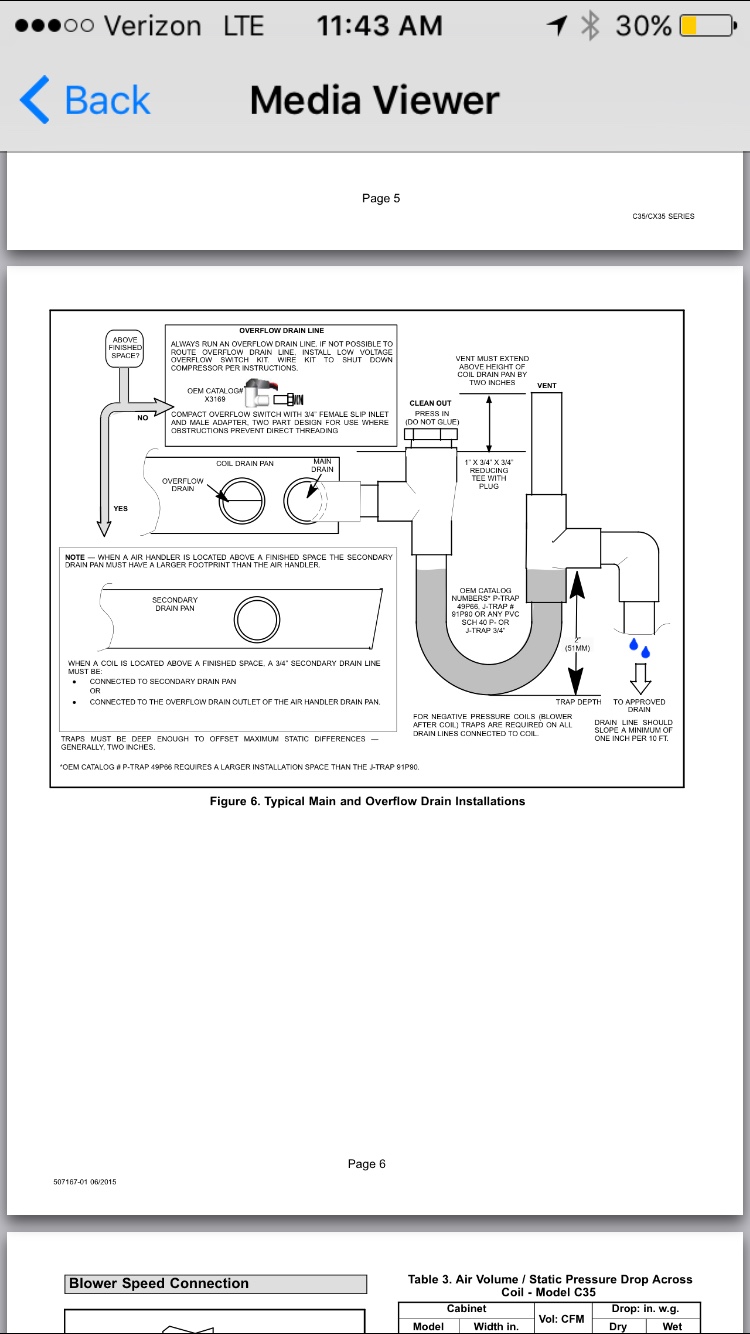Giantsean
Member
Hi All,
Our upstairs air handler (installed in attic) has a problem with leaking, and because our installers were pretty much hacks, it's been a long struggle. This summer I finally want to get it right and prevent what happened last year (overflow into the ceiling joists/insulation). On occasion it backs up and I suspect it is not venting well (I added the 45 bend and long pipe to allow for a little more overflow space... before that it had a small cleanout stub w/ a cap..
The hacks installed a drain pan which is fairly well sealed. They also installed a float switch to shut off the unit, but it never triggers because the real problem is that the p-trap for the condenser is outside the reach of the pan, and was overflowing out of the top of the trap cleanout.
The A/H sits on foam blocks on a board across the joists, so my only choice to move the pan is to remove the trap, suspend the unit, and slide the pan over. I should have enough room to just make it. Have attached a few pics to illustrate.
This setup does not touch the sewer line or is exposed to sewer gas until the basement. The line drops from the attic down a vertical chase, then does a couple 90's until it dumps into a reducer set up as a catch pan. The reducer attaches to the sewer and is trapped.
Questions as follows.
- Should the vent be in front of the trap? (see example pic below inline), I assume in this drawing it just drains outside and not into the sewer line or else it could be exposed to gas.
- Knowing my setup is not exposed to sewer gas, do I even NEED to trap at the handler? (maybe I can just vent). I am thinking I could get a better slope without it.
- Any advice on how to keep the general area as dry as possible? I will try to seal/dope the pipe where it threads into the A/H. as mentioned will also try to move the pan under the pipe openings to better catch water.
I know it's a weird setup so appreciate any advice!




Our upstairs air handler (installed in attic) has a problem with leaking, and because our installers were pretty much hacks, it's been a long struggle. This summer I finally want to get it right and prevent what happened last year (overflow into the ceiling joists/insulation). On occasion it backs up and I suspect it is not venting well (I added the 45 bend and long pipe to allow for a little more overflow space... before that it had a small cleanout stub w/ a cap..
The hacks installed a drain pan which is fairly well sealed. They also installed a float switch to shut off the unit, but it never triggers because the real problem is that the p-trap for the condenser is outside the reach of the pan, and was overflowing out of the top of the trap cleanout.
The A/H sits on foam blocks on a board across the joists, so my only choice to move the pan is to remove the trap, suspend the unit, and slide the pan over. I should have enough room to just make it. Have attached a few pics to illustrate.
This setup does not touch the sewer line or is exposed to sewer gas until the basement. The line drops from the attic down a vertical chase, then does a couple 90's until it dumps into a reducer set up as a catch pan. The reducer attaches to the sewer and is trapped.
Questions as follows.
- Should the vent be in front of the trap? (see example pic below inline), I assume in this drawing it just drains outside and not into the sewer line or else it could be exposed to gas.
- Knowing my setup is not exposed to sewer gas, do I even NEED to trap at the handler? (maybe I can just vent). I am thinking I could get a better slope without it.
- Any advice on how to keep the general area as dry as possible? I will try to seal/dope the pipe where it threads into the A/H. as mentioned will also try to move the pan under the pipe openings to better catch water.
I know it's a weird setup so appreciate any advice!
